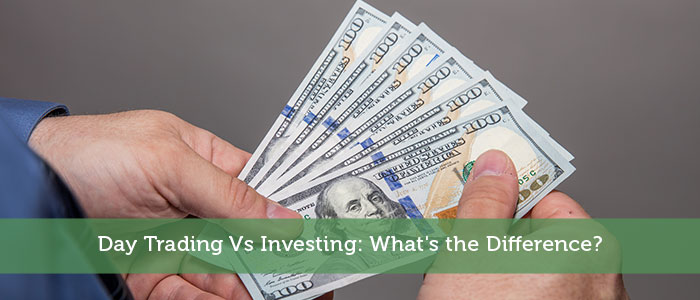The terms ‘investing’ and ‘day trading’ get tossed around a lot in the news and elsewhere, and they are often used interchangeably by people who don’t really understand the difference.
However, it is important to be aware that there are a few key distinctions between investing and day trading, even if in the end they are both concerned with the same basic topics.
Investors generally want to avoid day trading and day traders generally aren’t looking to invest, so let’s look at the key differences between the two to make sure that people are taking the right actions in the market to meet their goals.
Approach
Investors approach the markets as a place to maintain and develop their existing wealth slowly over time. Investors take a long-term view of their trades, and they spend most of their time performing in-depth research of prospective investment opportunities. Some investors are more concerned with protecting their wealth from the effects of inflation and erratic asset prices than actually making significant profits in the markets.
Day traders are looking for the quickest way to turn a profit on a trade before they’re off to the next potential target. While day traders may still look at an asset’s long-term fundamentals, they are generally far more concerned with what the price is doing today, this hour or even this minute. Day traders know that the price action for an asset can be extremely volatile as it goes from point A to point B over the span of months, and they try to profit as much from that volatility as they can.
Time
Day traders tend to spend a lot more time studying the markets and executing trades when compared to investors.
An investor may spend a few hours a week catching up on the major moves in the financial world and might actually execute a trade once every week or even month. Day traders will be making anywhere from a handful to a hundred trades each business day, and for each trade they make they may be doing 10 minutes or more of analysis.
Investors will quickly face diminishing returns on any time spent in the markets, while day traders will get pretty constant returns for any time that they can spend. While most day traders will learn to find a comfortable work/life balance, they can definitely productively sink far more time into the markets than an investor ever will.
Risk
To magnify the impact of the many small trades that a day trader will make each day, they tend to employ leverage. This means that any gains and losses will be magnified by the amount that they have borrowed from their broker to enhance the size of their trading positions.
Day traders face a greater risk of loss than investors to match the much greater potential returns that they are aiming for. One way to reduce some of that risk is to join a community that specializes in day trading.
That said, good or bad risk management by both day traders and investors can make the difference between capping a bad trade early and getting wiped out by bad choices, it just tends to happen much faster for day traders with poor risk management than investors.




